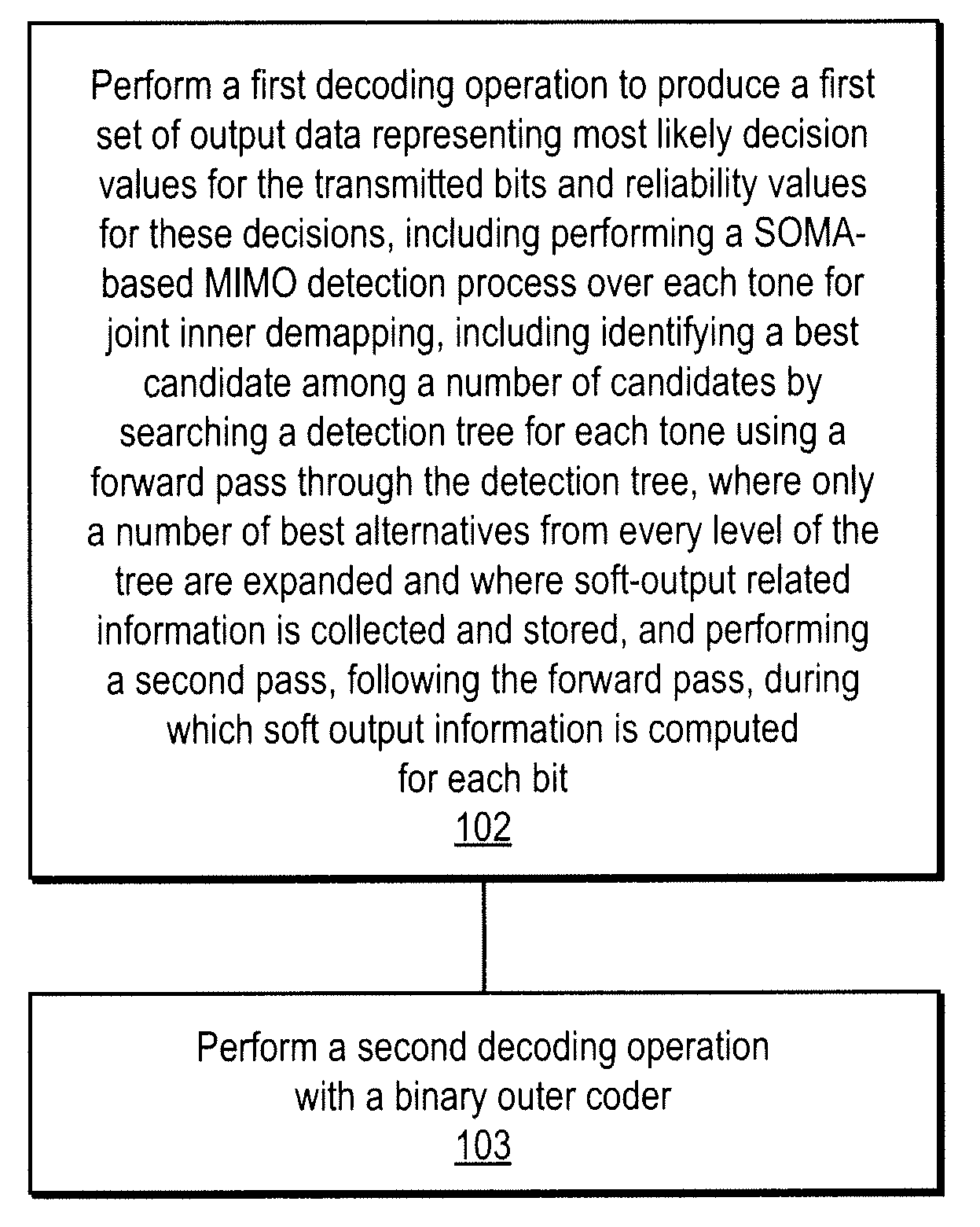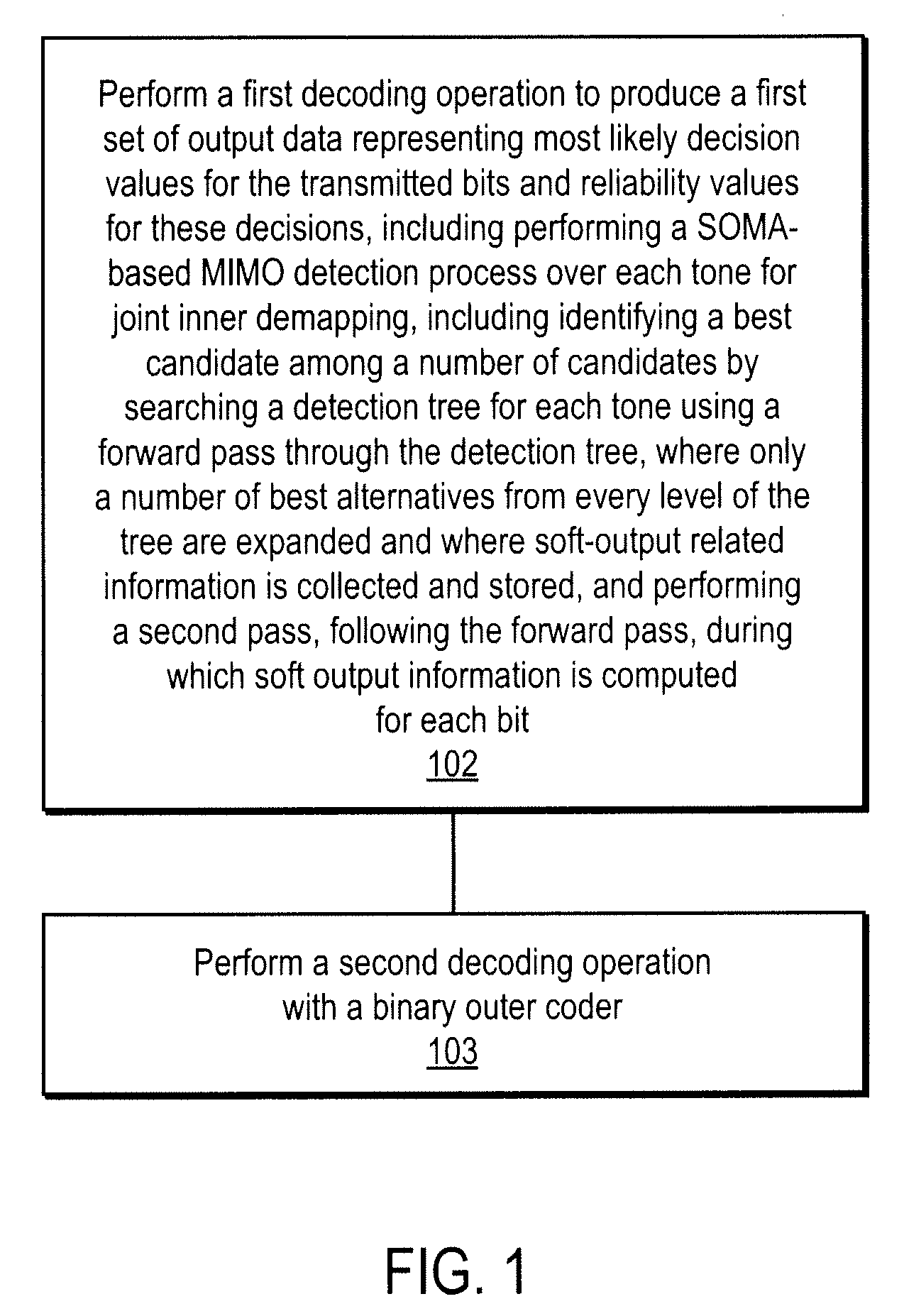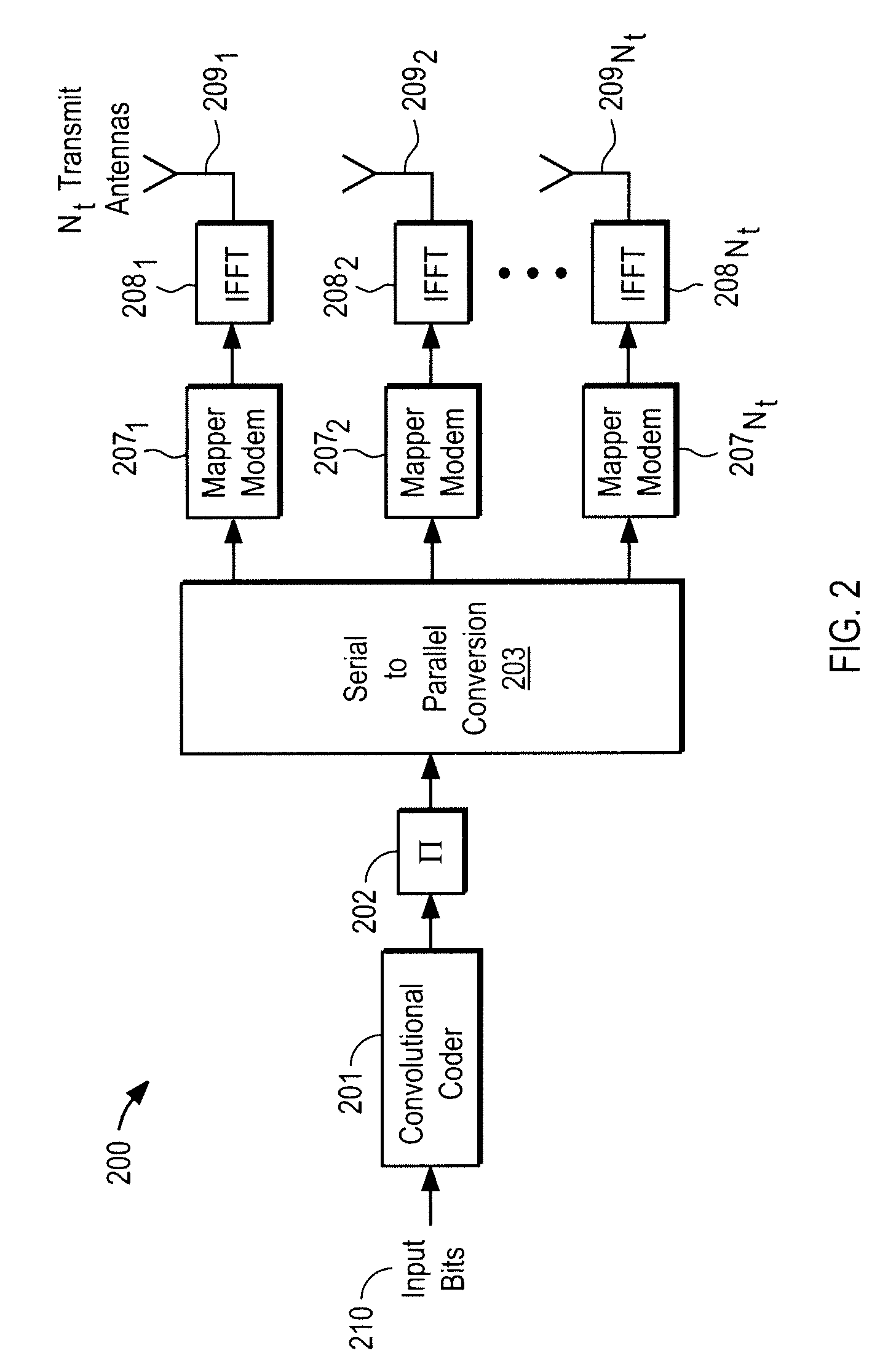Adaptive forward-backward soft output m-algorithm receiver structures
a receiver structure and forward-backward technology, applied in the direction of transmission monitoring, line-fault/interference reduction, coding, etc., can solve the problems of drastic reduction in complexity, cost in bit-error-rate performance, and computational intractableness of the maxlogmap-based inner decoder
- Summary
- Abstract
- Description
- Claims
- Application Information
AI Technical Summary
Problems solved by technology
Method used
Image
Examples
Embodiment Construction
[0031]Methods and apparatuses are disclosed for adaptive reduced complexity receiver structures that are based on inner decoders that use a forward-backward SOMA (FB-SOMA), a forward-backward extension of the soft output M-algorithm.
[0032]In one embodiment, the receiver includes an inner / outer decoder structure that exploits iterative (turbo-like) decoding. In one embodiment, the iterative decoding is performed using an inner decoder (MIMO joint demapper) and the outer decoder that performs soft-in soft-out (SISO) detection / decoding. The inner decoder is referred to herein as a joint demapper. In one embodiment, the soft-output inner-decoder is implemented by use of a modified soft output M-algorithm, (SOMA). This soft-output MIMO detector is applied on every tone (or, sub-channel) in the OFDM system, as well as at every iteration in the decoding. The number of candidates explored in the SOMA is controlled by the parameter M, the number of paths that are extended from each node or l...
PUM
 Login to View More
Login to View More Abstract
Description
Claims
Application Information
 Login to View More
Login to View More - R&D
- Intellectual Property
- Life Sciences
- Materials
- Tech Scout
- Unparalleled Data Quality
- Higher Quality Content
- 60% Fewer Hallucinations
Browse by: Latest US Patents, China's latest patents, Technical Efficacy Thesaurus, Application Domain, Technology Topic, Popular Technical Reports.
© 2025 PatSnap. All rights reserved.Legal|Privacy policy|Modern Slavery Act Transparency Statement|Sitemap|About US| Contact US: help@patsnap.com



